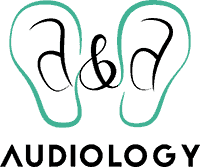- The Connection Between Hearing Loss and Dementia - July 30, 2024
- The Advantages of Rechargeable Hearing Aids - July 16, 2024
- How to Enjoy Music Festivals While Protecting Your Hearing - July 3, 2024
There is evidence that people with hearing loss are less inclined to participate in exercise. This makes sense, considering that withdrawing from social and public activities is one of the hallmarks of hearing loss.
However, just as increased isolation exacerbates other mental and emotional issues associated with hearing loss, like depression, a more sedentary lifestyle can contribute to hearing loss-linked conditions. Certainly, issues with balance that are impacted by hearing loss can be managed or even improved with consistent exercise, particularly practices like yoga or tai chi.
Hearing loss and aging
Many of the conditions associated with aging can be alleviated with regular movement. There’s a saying in the fitness world, “motion is lotion,” and it speaks to the ways that participating in a functional fitness routine can support better feeling joints, muscles, and bones.
Aging impacts our hearing because of the small and essential cells within the inner ear. These cells are responsible for receiving noise from the world and transmuting it into sound information that is sent to the brain. In the brain, our processing centers rely on sound information to make language, music, and other useful information.
The cells of the inner ear are non-regenerative, which means that they do not repair themselves when damaged or reproduce. We lose cells over time through the natural process of aging, so that by the time one is 65 years old, one-third of our peers will live with debilitating hearing loss.
How can exercise help?
When we say ‘get your blood pumping,’ we mean that literally. Cardiovascular exercise increases blood flow within the body. We need fresh blood to deliver oxygen to the tiny, sensitive inner ear cells which keeps them healthy and functioning. Cardiovascular exercise also helps deliver fresh blood to the brain and aids in maintaining that quick-acting processing we are so reliant upon for speech recognition and response.
Stretching also increases blood flow, which means that even light movement practices are worth incorporating into your week.
What type of exercise should I do?
Above all, the type of exercise you engage in should be something you enjoy. It doesn’t matter if you found the ‘best’ workout program when you can’t stand doing it and drop the habit immediately.
The best method of determining which exercise is for you is by trying a handful of options. Ask your friends if they have a favorite movement class you can accompany them to. Check in with your neighborhood recreation center, gym, or community center to see if an exercise program offered appeals to you.
If you prefer to exercise alone in the comfort of your home, there are fantastic cardio, yoga, and other styles of movement offered on YouTube or Zoom. Thanks to the pandemic, many teachers and fitness trainers have adjusted their services to be accessible online and the buffet of options is more diverse than ever.
Your daily workout doesn’t need to take the shape of a formal class. Most experts advise between 20 and 30 minutes of movement per day. Take a walk or turn on your favorite album and dance for half an hour!
How exercise can harm hearing
It’s worth mentioning that there are types of exercise that can actually harm hearing. Loud music played at spin classes and other group fitness options can reach dangerous decibels, which harms the inner ear cells through exposure to too loud noise. A study evaluated noise levels of group exercise classes and found that volumes of 91 to 101 decibels were regular occurrences. For context, noises over 85 decibels can potentially harm hearing, and exposure times can be limited.
Some people plug in their earbuds and crank up the tunes to help them cope with a long treadmill session or intense weight lifting circuit. Even though this can motivate you to reach a personal best, the impact on your hearing health could be decidedly less positive. Headphones at maximum volume can exceed 100 decibels, so you should try to keep the volume at halfway and never more than two-thirds of the maximum.
Schedule a hearing consultation
If hearing loss is holding you back from participating in your favorite forms of exercise, schedule a hearing exam today. We can determine if you’re a good candidate for hearing aids or another hearing loss solution that will get you back to doing the things you love.

